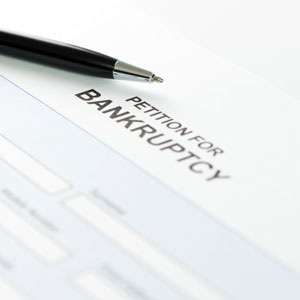
Subchapter 5 Chapter 11 Bankruptcy: An Overview For Residents Of Howard County, MD
In this article, you will discover:
- The difference between Subchapter 5 Chapter 11 bankruptcy and traditional Chapter 11.
- The eligibility requirements for filing Subchapter 5 bankruptcy.
- The types of businesses best suited for filing Subchapter 5 bankruptcy.
What Is Subchapter 5 Chapter 11 Bankruptcy?
Subchapter 5 is a streamlined version of Chapter 11 bankruptcy explicitly designed for small businesses and individuals engaged primarily in business activities. It was introduced by the Small Business Reorganization Act (SBRA) of 2019 to make the bankruptcy process faster, more affordable and more efficient for smaller business debtors seeking to reorganize their debts and continue operations.
Subchapter 5 eliminates some of the more complex and expensive requirements of traditional Chapter 11, making it more cost-effective and accessible for smaller entities.
How Does Subchapter 5 Differ From Traditional Chapter 11 Bankruptcy?
Some of the key differences between Subchapter 5 and Chapter 11 include:
Cost And Complexity
Subchapter 5 is typically less expensive and more straightforward than traditional Chapter 11, as it removes the need for a lengthy disclosure statement and creditors’ committees.
Plan Filing
In Subchapter 5, only the debtor can file a reorganization plan. The timing for filing the plan is more constrained than in a traditional Chapter 11 case. Specifically, the Subchapter 5 debtor must file the reorganization plan within 90 days of filing for bankruptcy, subject to demanding requirements for extension.
In a typical Chapter 11 case, there’s a more extended period to file a reorganization plan, and that deadline can be extended more freely.
Absolute Priority Rule
There’s no absolute priority rule in Subchapter 5, which is an important distinction. Owners can retain equity in the business, even if unsecured creditors aren’t paid in full, so long as the plan is deemed fair and equitable.
Function Of The Trustee
In Subchapter 5, the trustee acts more as a negotiator. By contrast, in a regular Chapter 11 case, no trustee is involved other than the US Trustee’s Office. In the event a Chapter 11 debtor is deemed unable to meet the requirements and run the case properly, sometimes a trustee is appointed to oversee the case, but that’s not typical.
Payment Terms
In Subchapter 5, you can make payments over a three- to five-year period to pay your creditors back, versus the 180-day deadline from the time of filing in Chapter 11.
What Are The Eligibility Requirements For Small Businesses Under Subchapter 5?
To qualify for Subchapter 5, you must have under $3,024,725 of non-contingent, liquidated debts. That amount is down from $7,500,000 as of June 21, 2024. The other requirement is that at least 50% of the debts must arise from commercial or business activities.
Some entities are excluded from filing, specifically public companies and those primarily involved in owning single real estate properties.
What Is The Subchapter 5 Bankruptcy Process From Start To Finish?
The first step is to file the petition under Subchapter 5. That involves filing a lot of financial information with the court: schedules, financial statements, tax returns, profit and loss statements, statements of business operations and other documentation.
When you file Chapter 5 in Howard County, MD, the US Trustee’s Office usually reaches out to discuss the appointment of a trustee to assist in facilitating negotiations between yourself and your creditors. Within 60 days of filing, the court holds a status conference to review the case. There’s also a meeting of creditors and an initial debtor interview that happens about 30 days after filing the petition.
Within 90 days of filing, you have to file a Plan of Reorganization. In Maryland, the plan has to be accompanied by a mini-disclosure statement. This statement is far less lengthy than in a regular Chapter 11 case, but will be due a lot sooner.
Once the plan is filed, whether everything is negotiated and resolved between you and your creditors or not, you will typically have a confirmation hearing. That hearing is where the court decides if the plan meets all the requirements and whether you have a consensual or non-consensual confirmation.
Consensual confirmation is when you get enough votes from creditors to approve the plan on a consensual basis. If you can’t get enough votes, then, unlike in a regular Chapter 11, you can get the plan approved on a non-consensual basis by the court without the required number of votes from the creditors. In other words, even if all the creditors disagree and vote against the plan, the court can still approve it, subject to the requirements of the Bankruptcy Code.
In some Subchapter 5 cases, you can obtain a discharge once the plan is confirmed and you file a Notice of Substantial Consummation of the plan. This notice is typically filed with the court within 14 days after the confirmed plan has been substantially consummated, when you make the first set of payments under the plan to your creditors.
At that point, you simply have to perform under the repayment plan. If that happens, at the end of the case, you file for and obtain the Final Decree, and the case is closed.
How Long Does The Subchapter 5 Bankruptcy Process Typically Take?
While you could get a plan confirmed within four or five months, the process usually takes longer. Six months to a year would be typical. Once the plan is confirmed, it really depends on how quickly you pay your creditors off under its terms.
If you have a payment plan, the process is probably going to take three to five years. If you sell off your business or refinance to pay off the plan, the process could conclude much sooner.
What Types Of Businesses Are Best Suited For Subchapter 5 In Chapter 11 Bankruptcy?
The first step will be to see if your business qualifies for Subchapter 5 based on having debt under the amount allowed for such a filing.
Subchapter 5 is better for most smaller businesses if they qualify due to the lower cost, the role of the trustee, the no absolute priority rule, the absence of creditors’ committees, and the inability of creditors to file a competing plan. The other advantage is that the court can confirm your plan over creditor objections and failure to obtain the required number of votes.
The only real disadvantage to Subchapter 5 is the expedited process, as there’s not a lot of time to get extensions compared to regular Chapter 11. However, getting through the process quicker could be an advantage in terms of saving costs.
Notes From The Field: The Time Constraints Of Chapter 5
I had a case where we didn’t have a lot of time to prepare. We had to file on an emergent basis, and it was challenging to pull together everything in the timeline we were given. That was a disadvantage, but it did work out.
If you have the time to prepare for Chapter 5, it does help. If you have a larger business and don’t have the eligibility for Subchapter 5, then Chapter 11 would be the only option if you are looking to stay in business. Barring this, your only other option would be Chapter 7, though this would mean the end of your business.
Speaking with an experienced bankruptcy attorney about your goals and business size is the first step in deciding which type of bankruptcy is best for you.
Still Have Questions? Ready To Get Started?
For more information on Subchapter 5 and other bankruptcy options for small businesses in Maryland, an initial consultation is your next best step. Get the information and legal answers you are seeking by calling (443) 492-9003 today.
